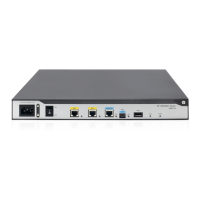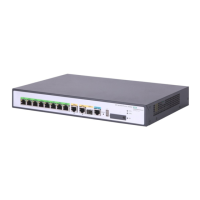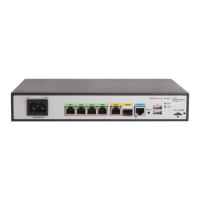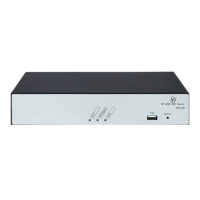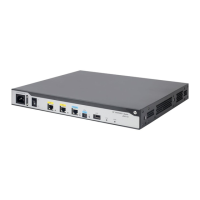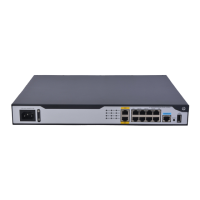232
Frame Relay address mapping
Frame Relay address mapping associates the protocol address of a peer device with a Frame Relay
address (local DLCI). Then, the upper-layer protocol, for example, IP, can locate the peer device.
For example, an IP packet is transmitted across a Frame Relay network as follows:
1. When a DTE device receives an IP packet, the DTE device looks up the IP routing table for the
outgoing interface and next-hop address.
2. When the outgoing interface is enabled with Frame Relay encapsulation, the device looks up the
next-hop IP address in the address-to-DLCI maps for the DLCI.
3. The IP packet is transmitted over the virtual circuit identified by the DLCI.
The address-to-DLCI maps include the following types:
• Static—Manually created.
• Dynamic—Created through InARP.
Frame Relay uses InARP to create an address-to-DLCI map through the following process:
4. InARP sends an InARP request to the peer end through a virtual circuit at the InARP request interval
during an InARP learning process when the following conditions exist:
{ A new virtual circuit is established.
{ The local interface is configured with an IP address.
The InARP request carries the local IP address. By default, the InARP request interval during an
InARP learning process (the detection timer) is 60 seconds.
5. When the peer device receives the InARP request, the peer device obtains the local IP address and
creates an address-to-DLCI map. At the same time, the peer device responds with an InARP reply
carrying its IP address.
6. When the local device receives the InARP reply, it creates an address-to-DLCI map.
7. After the local device creates the address-to-DLCI map, the local device modifies the InARP request
interval to 12 minutes (the aging timer).
The aging timer is fixed. When the aging timer expires, the local device continues to send InARP
requests.
8. The local device sets the aging timer value to the detection interval when the following conditions
exist:
{ The aging timer expires.
{ The local device has not received any InARP replies.
9. When the local device has not received any InARP replies within three detection intervals, the
learned dynamic address-to-DLCI map is deleted.
When the local device has not received InARP replies within a detection interval, the local device
continues to send InARP requests. The local device stops sending InARP packets until the local interface
is not configured with an IP address or the local PVC is inactive.
LMI protocol
Frame Relay uses the LMI protocol to manage PVCs, including the following tasks:
• Notify the addition of a PVC.
• Detect the deletion of a PVC.
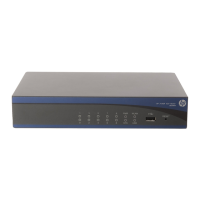
